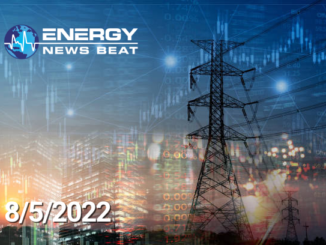
Crude oil futures were higher in mid-morning Asian trade July 1, recouping losses after a steep plunge overnight, though sentiment remained shaky as a raft of data showed further signs of weakness in the US economy.
A widely-watched OPEC+ meeting June 30 ended without event.
At 11:02 am Singapore time (0302 GMT), the ICE September Brent futures contract was up 19 cents/b (0.17%) from the previous close at $109.22/b, while the NYMEX August light sweet crude contract rose 7 cents/b (0.07%) at $105.83/b.
The NYMEX crude marker had settled more than $4/b lower overnight, with ICE Brent not far behind, after data showed US consumer spending fell for the first time this year after adjusting for inflation.
Real consumer spending in the US fell by 0.4% on the month in May, after a downwardly revised 0.3% gain in April, US Commerce Department data showed June 30. In nominal terms, spending was up 0.2% in May.
The personal consumption expenditures price index, tracked by the US Federal Reserve for its inflation targeting, was up 6.3% year on year in May, unchanged from the April reading and fueling hopes that inflation might have peaked.
“What is more attention-grabbing may be the worst-than-expected decline in real consumer spending (-0.4% versus -0.3% forecast), which shows that demand is clearly moderating in light of elevated prices and tighter liquidity conditions,” IG market strategist Yeap Jun Rong said in a July 1 note. “This drove recession fears to take greater control of sentiments yesterday.”
The US Federal Reserve Bank of Atlanta June 30 also revised its second-quarter GDP forecast to a negative 1%. Official US government data showed GDP contracting 1.6% in Q1, meaning a second consecutive negative print would indicate the economy has entered a recession.
Analysts said weakening macroeconomic fundamentals will likely weigh on oil prices in the near term, though a fundamentally tight oil market will keep declines limited.
“There is a very real risk that we see a further deterioration in spending over the second half of the year,” ING analyst Warren Patterson said. “So for oil, it is clear that macro developments are still the key driver for price direction at the moment.”
“Fundamentally, the market is still tight, so we expect only limited downside in prices,” Patterson added.
At the end of the June 30 meeting, OPEC+ reaffirmed plans for a nominal 648,000 b/d production rise in August as widely expected.
Dubai crude swaps were lower in mid-morning trade in Asia July 1 from the previous close, though intermonth spreads were mostly unchanged.
The September Dubai swap was pegged at $97.93/b at 10 am Singapore time (0200 GMT), down $2.94/b (2.91%) from the June 30 Asian market close.
The August-September Dubai swap intermonth spread was pegged at $3.41/b at 10 am, down 1 cent/b over the same period, and the September-October intermonth spread was pegged at $2.56/b, unchanged from the previous session.
The September Brent/Dubai EFS was pegged at $11.79/b, down 7 cents/b.
Source: Spglobal.com



